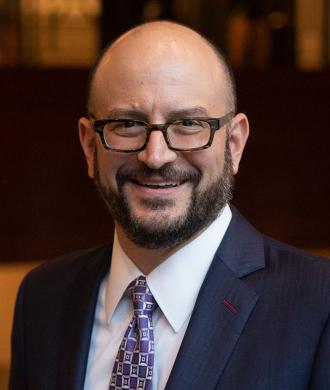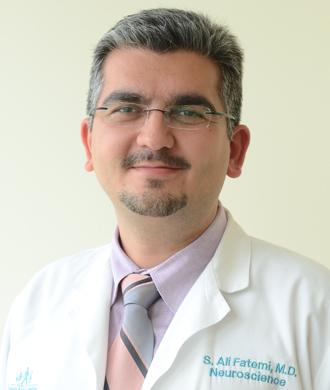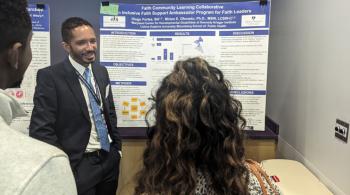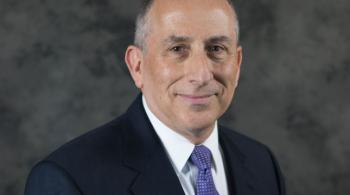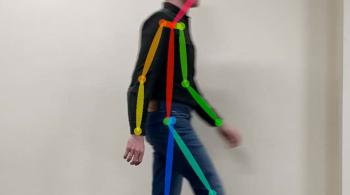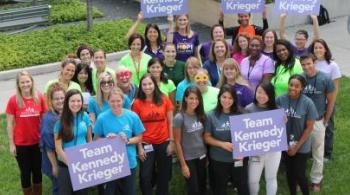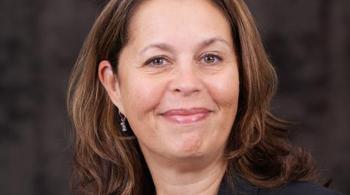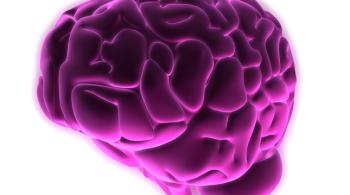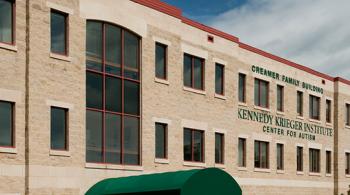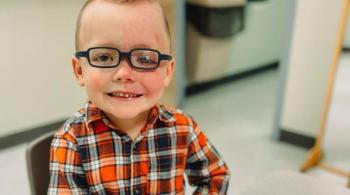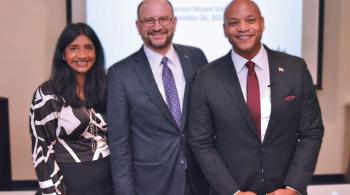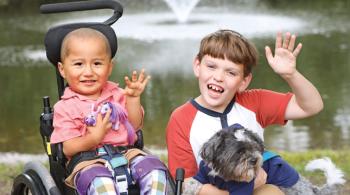Join us for the 30th episode of Your Child’s Brain. In this episode, we reflect back on the topics that we discussed over the past 2 ½ years and talk about the progress that has been made in understanding and treating disorders of the developing brain and nervous system.
Dr. Brad Schlaggar, president and CEO of Kennedy Krieger, is joined by his colleague Dr. Ali Fatemi, a pediatric neurologist and neuroscientist, who, in addition to serving as chief medical officer at Kennedy Krieger, holds the Blum-Moser Endowed Chair in Pediatric Neurology at Kennedy Krieger, and leads the Moser Center for Leukodystrophies at Kennedy Krieger. Dr. Fatemi is also professor of neurology and pediatrics at the Johns Hopkins University School of Medicine.
Resources
- Rare Disease Network
- National Organization for Rare Disorders (NORD)
- Eunice Kennedy Shriver Intellectual & Developmental Disabilities Research Centers (EKS-IDDRCs)
- Kennedy Krieger Intellectual & Developmental Disabilities Research Center
Learn More About Our Featured Speakers
Learn More About Our Featured Speakers
View Episode Transcription
Dr. Brad Schlaggar (BS): Welcome to Your Child's Brain, a podcast series produced by Kennedy Krieger Institute with assistance from WYPR. I'm Dr. Brad Schlaggar, pediatric neurologist and President and CEO of Kennedy Krieger Institute. This is our 30th episode of Your Child's Brain. As we head into closing out 2023, I've been thinking about the many topics we've covered over the past 2 1/2 years and have been reflecting on some real progress that has been made during this period with respect to understanding and treating diseases and disorders of the developing brain and nervous system. Our very first episode, that was July of 2021, featured a conversation between me and my good friend and colleague, Dr. Ali Fatemi, the chief medical officer of Kennedy Krieger Institute. Ali and I, in addition to telling our stories about what drew us into this profession of child neurology, neuroscience, and a career long devotion to helping children with neurodevelopmental concerns, we also talked about what we hope to accomplish with this podcast as a venue for sharing information with all of you. I thought it would be a good idea to check back in with him, take stock of where we are and where we're heading. It's a pleasure to welcome back Dr. Ali Fatemi, pediatric neurologist and neuroscientist, who, in addition to serving as chief medical officer at Kennedy Krieger, holds the Blum Moser Endowed Chair in Pediatric Neurology, and leads the Moser Center for Leukodystrophies at Kennedy Krieger. Dr. Fatemi is also professor of Neurology and Pediatrics at the Johns Hopkins University School of Medicine. Ali, in the last year or two we've seen a number of treatments emerge for some rare diseases of the developing nervous system. Before we dive into talking about those treatments and the advances made, let's talk a bit about why rare disease research and treatment development matters so much. I'd like to say that having any rare disease is rare, but having a rare disease is common. Let's talk about rare disease.
Dr. Ali Fatemi (AF): A rare disease is, by definition, a disease that affects less than 200,000 people in the United States. That's how the federal government has designated the term. There is about 8,000 different diseases that fall in this category, and almost all of them are due to underlying genetic abnormalities. Each of these diseases can be extremely rare. They can be one in a million or even less. But overall, because there's so many of them, they affect about 25-30 million Americans and if you think about it, worldwide, somewhere in the order of 350 million people have a rare disease. But the problem is that most doctors, because these diseases are rare, they don't know how to diagnose or treat these diseases, they have never seen these diseases. Most people with rare diseases are either therefore misdiagnosed, or they're diagnosed very late. The time to diagnosis is more delayed in families and individuals that have less resources so they end up having a medical disparity in addition to having social disparities. Because most of them have no curative treatments, it is a real challenge how to approach them. Now luckily, as you mentioned, in the last few years there has been increasing awareness within academic institutions but also in the biotech industry for this area, that is basically an area of hugely unmet need. One important aspect for us to understand is that when we study these rare diseases, since they are due mostly due to genetic changes, understanding what those genes do help us also understanding biological processes that we can see when they go wrong in a patient with a rare disease. That knowledge then can be applied to more common diseases. If you try to identify treatments for rare diseases, those will eventually help facilitate the development of therapies for more common conditions.
BS: You made the point that the majority of rare diseases are genetic diseases. Let's talk about what that means. What does it mean to say something is genetic? What's a gene?
AF: Let's say, what is a gene? A gene is basically a string of molecules that we call nucleotides that make up the DNA in our cells. There are four different nucleotides, and each of them can be considered like a letter. There's four different letters, and each gene contains a string of these letters, which provide instructions to the cells in our bodies to make proteins. Proteins are the building elements of the cell. One could say, basically each gene is like a recipe for a cookie and we have about 20,000 genes in each cell. These 20,000 genes are the 20,000 cookbooks or recipes that basically our body uses to make millions of different types of proteins. Again, building elements from this information. A genetic disease is basically a condition when either there is a missing recipe for this cookie that we want, or a part of a recipe that has gone wrong or you may just have a misspelling in that recipe which then can result in, say an ugly tasting cookie, a salty cookie or maybe you just get goo or not a cookie at all, depending on how bad you misspell something. A genetic disease, basically, when you have a change in the gene that results in an abnormal product, an abnormal protein.
BS: When you approach a rare disease from a treatment standpoint, the treatment can take multiple different forms. One of those is gene targeted therapy. Sticking with talking about genes, let's talk about what are gene targeted therapies?
AF: Gene targeted basically means going directly after that genetic abnormality in the cell. There's different ways you can do that. One of the ways we call right now is gene therapy, which actually should be really gene replacement therapy. Here what we're trying to do is to give the body the gene that is misspelled, give the body the correct recipe. The way we do that is usually we inject the virus that has been genetically engineered to contain a correct copy of that gene that is abnormal into the person's body. Again, you're basically providing the cells a copy of the correct recipe. Of course, one has to make sure that the virus is modified, that it's safe and not harmful to the cells. There are some challenges with that that come along. Another way to do gene targeted therapy is a method by using something we call anti sense oligonucleotide. These are small strands of those nucleotides that basically mirror the sequence of the gene that we're trying to target. You inject those in the cells and basically they can cover, for example, the mutations. They try to trick the cells so that the cells don't see the abnormality or that genetic change. You're basically covering up a misspelling or you can highlight certain area of an abnormal gene to make more of that product. Then finally, there is also what we call gene editing. I'm sure you've heard about the Crisper technology, This is in the news all the time. What does that really mean? It's a method that allows you to actually correct the misspelling. You're not replacing the missing recipe. You're actually going in and you're fixing that misspelling in the recipe. You're cutting out the abnormal sequence and you're putting in instead the correct sequence. It's really exciting, especially for those diseases where there isn't a missing recipe, but the recipe that makes an ugly tasting the cookie and you're trying to get rid of the ugly tasting cookie. You're literally editing the recipe. This methodology is still in early clinical development. One of the main challenges that the so called gene editors are just too big right now to get them into this target organs. But over the last couple years, there has been a dramatic rise in new genetic engineering tools to try to improve and to make these editors smaller and smaller and the first human trials are already underway.
BS: When we are treating patients that have rare diseases, without tools like you're just describing we are limited to treating symptoms. That's important to do, to treat the symptoms of the condition. But now we're on the precipice of being able to actually treat the underlying mechanism that leads to that disease and the set of symptoms patients experience. Let's talk about some of the rare diseases where we now actually have some tools in our tool kit to treat the condition directly.
AF: Yes, I'm really excited to report that. Just within the last couple of years as you and I talked in this podcast the first time, there has been already several new FDA approved gene targeted therapies that are already in the market that are already being used by patients. For example, a disease that I've been working on for the last two decades, it's called adrenoleukodystrophy, also known as ALD. It's a rare disease that is fatal. It affects young boys in the frequency of about one in 20,000. You can save these boys if you identify them very early and if you start treating them with gene therapy. They basically live a long life if you do so, versus dying at 5-6 years of age. The gene therapy trials took almost a decade to complete, and the FDA approved this product September of last year. Another gene therapy product that was just approved in the end of spring of this year in 2023, is for a disease called duchenne muscular dystrophy. There are now about 100 different gene therapy trials happening in many rare diseases and while only a handful of them have been approved, we really anticipate that within the next five years or so, many more will become treatable as these trials are moving forward.
BS: We talked about gene targeted therapies. Let's talk about other approaches. There's this category that's called small molecule therapy and there's enzyme replacement therapy. Can you take us through the basic differences of these approaches?
AF: Enzyme replacement therapy means basically what it is. It's replacing a missing enzyme. Here instead of us injecting the recipe, you are basically injecting the cells with the whole cookie. You give them the cookie that they are missing. An example would be a disease called pompe disease, which is a genetic muscle disease where the body is missing an enzyme called glucosidase. This enzyme usually breaks down glycogen in the sugar storage that we have in our muscle. Consequently, because this enzyme is missing, glycogen is not broken down and builds up in the muscle and leads to severe muscle weakness and wasting, and those patients usually die early on. You can treat this condition by infusing this missing enzyme into the blood of these patients. This is really a great approach. There are some challenges with this therapy and that is that these proteins, they are too big usually to get them to certain organs. For example, they cannot cross the barrier between the blood and brain that we have in our body and if you inject them into the vein, they won't just make it to the brain. That's one of the challenges with enzyme replacement therapy. Another approaches are, as you said, small molecules. Small molecules that don't fix the gene itself, but they try to modify what is happening downstream as a consequence of a gene not functioning normally. Here is a great example, for example, the Rett syndrome. Rett syndrome is a rare disease that affects girls mostly as opposed affect boys mostly. It presents usually in the first year of life regression of development, so severe developmental regression, severe intellectual disability, repetitive behaviors, and often seizures. We know that the gene abnormality that causes Rett syndrome impacts many functions in our cells. Specifically, it results in an increase of a protein that blocks the maturation of nerve cells. A drug was developed, a small molecule called trofinetide, which is a drug that blocking protein and so consequently the cells actually improve with their maturation. This was tested in patients and it was approved again just in March of this year as the first drug for Rett syndrome that showed to be effective in improving the key behavioral symptoms of Rett syndrome in patients. This is really exciting times when it comes to these type of therapies.
BS: It's very exciting times. When I started in this field 30 plus years ago, the idea that these specific conditions that we've talked about so far, adrenoleukodystrophy, duchenne muscular dystrophy, Rett syndrome as examples, we hoped for, but it didn't seem that promising that we were going to actually have specific interventions and yet now, decades later, as you say, it's a really exciting time. What's next? What are the next conditions that are going to succumb and what are the tools that we'll be able to develop to go after them? Now, one of the tools that has been part of the clinical world for a while, in an area that you have focused a good deal of your attention on is newborn screening for earliest detection of a rare disease. You've already made the point, like with the adrenoleukodystrophy, that you detect it early and you get the gene therapy in place early, it dramatically changes what happens to that individual. Let's talk more about how and why newborn screening and early detection have such a potentially powerful impact.
AF: One of the key lessons that we are learning as we're studying these rare diseases, is that in general, not just in adrenoleukodystrophy, but in the vast majority of rare diseases, that the longer you wait, the less likely it will be that the therapy will work because more damage is done by that genetic abnormality. We always have the approach of trying to intervene as early as we can, hoping that we can make the most impact the earlier we intervene. However, as we talked about it, rare diseases are often not diagnosed or misdiagnosed and some people, it takes them years, if not decades, to get to the correct diagnosis. That's an expensive and difficult diagnostic journey for the affected families. Usually, what they do, they get the diagnosis and may be way too late for any intervention to work. Newborn screening is a way to avoid these challenges by having essentially a very cheap, quick, and highly specific and sensitive test that is done in the newborns by using a small amount of blood, usually it's a drop of blood that we collect from babies in the nursery that can then diagnose a treatable genetic disorder. The first newborn screening test was for a rare disease called phenylketonuria also known as PKU. This is basically a disease where patients cannot metabolize an amino acid called phenylalanine, and so this leads to a very severe neurological disorder. But if you treat them right at the beginning, shortly after birth, and you modify the diet and take away basically phenylalanine from their diet by depriving them from protein and having them on a very restrictive protein diet, they turn out to be more or less normal developmentally, at least in the first two three decades of life. We now have many diseases for which similar approaches are being done using newborn screening. Each state has typically a different list of diseases. For example, the state of Maryland screens about 50 different diseases at birth. Again, like I mentioned earlier, adrenoleukodystrophy, the disease that I've been working on, if you diagnose them early, you can save them. My late mentor, Dr. Hugo Moser, who was actually in your role Brad as the president of the institute between 1976-1988. Along with his wife Ann Moser, who's still with us here in the lab today, they both developed the newborn screening test for adrenoleukodystrophy about 20 years ago. It's now implemented in over 30 states in the United States and millions of newborns are being screened for it every year.
BS: It's a remarkable contribution and appreciate the reference to the history of this institute. Dr. Moser was in our world of child neurology, is one of the iconic figures, really pioneered translational neuroscience, I think inspiring both of us in our professions. Ali, I know that just last week you attended a couple of really important conferences. I was with you for the second one of those two. The first one was a conference focused entirely on rare diseases. Tell us about that conference, what were some of the significant takeaways from it?
AF: The first meeting last week was a gathering of the RDCRNs. This stands for Rare Disease Clinical Research Networks. This is a group of 23 consortium that are funded by a National Institute of Health. Kennedy Krieger Institute serves as a site for two of these RDCRNs. One is called the GLIA Consortium, which is a consortium on leukodystrophies, rare disease affecting the brain's white matter. I coded this consortium together with two colleagues from other institutions. There are also a site for the Brittle Bone Disease Consortium were Dr. Mahim Jain, one of our medical faculty, serves as a site leader. The objective of these rare disease clinical research networks are to collect the much needed natural history data for rare diseases. Before we can test a therapy let me talk about gene targeted therapies and small molecules, before we can even test them in a patient, you first need to know how the disease progresses. What the disease course is like in a patient? It's really difficult to know that in a rare condition where there's just a handful of patients across the United States. We need to know what we are measuring so that we can tell what is actually improving when we're trying to treat the patient. It's really essential to collect that clinical research information and collect it in a quantitative way. That's what the consortium are studying here. They're basically studying measures of the natural history of rare diseases. The main focus of this week's conference, I guess last week's conference was how we can harness artificial intelligence and machine learning tools to conduct this type of clinical research more effectively. For example, we use in my lab and machine learning tool that looks at hundreds of metabolites in the blood sample of patients and tries to see if that can predict how fast a patient with adrenoleukodystrophy will get worse. We're still in early stages of this type of machine learning applications for the study of rare diseases. But in the coming next 5-10 years, I suspect we will be likely able to conduct clinical trials much more efficiently than we do today using these type of technologies.
BS: These types of technologies are absolutely essential for us to achieve our objective of really a precision approach to medicine, where we understand what has to be done for a given patient and their specific genetic mutation, for example, and their specific set of clinical issues. These approaches using machine learning, artificial intelligence, that's the way in to a truly precision approach to medicine. Now, the second conference, the one I joined you for, was the annual meeting of the directors of the 15 Intellectual and Developmental Disabilities Research Centers in the US. These are centers, and Kennedy Krieger is one of them that are funded by the National Institute for Child Health and Human Development, one of the NIH institutes. The charge is focused really entirely on child health. I think it's important for people to know that these centers exist at the federal. Government mechanism is supporting them. Let's describe what they do, how they operate and collaborate, and some of the recent successes that have emerged from them.
AF: The Intellectual and Developmental Disabilities Research Centers, abbreviated as IDDRC, are dedicated research centers that basically focus on intellectual and developmental disabilities. We've learned over the last three decades that many of these type of disabilities are due to underlying genetic conditions. For example, Down syndrome and Fragile X syndrome. Both genetic diseases, when you combine them, are the most common cause of intellectual disability in males, in developing nations. These IDDRCs provide resources to investigators to study intellectual and developmental disabilities. For example, here at Kennedy Krieger, our center supports many investigators in a large variety of areas ranging from conducting molecular studies in stem cells in the cell culture dish lab to neuropsychological testing and cutting edge human brain imaging studies in patients. In addition to having these IDDRC centers, there is also a network of these IDDRCs, a national network where we all collaborate amongst each other and we sat between these centers. This collective of all IDDRCs have been conducting some really exciting collaborative research. One project, for example, is called the Brain Gene Registry. This is a study that is currently ongoing where we are collecting extensive psychological neurological clinical data on children who have changes in genes that are felt to be abnormal but are not fully yet associated with the disease. This will likely lead to discovery of multiple novel disorders.
BS: That's a nice segue set up to the next question, which is, what do you consider to be the most exciting directions that are on the horizon for us in both clinical care and research?
AF: I think I go back to what you mentioned earlier that just a couple of decades ago, most of these conditions we would see these young children affected and not being able to help them. Spinal muscular atrophy, for example, it's a terrible disease. We used to diagnose infants with it and we would watch them die before they turn one year of age. Now we do newborn screening, for example, the state of Maryland does newborn screening for spinal muscular atrophy. When we identify them early, we can treat them. We have two types of gene targeted therapy, both with the virus and antisense oligonucleotide. They are now living and developing and are not yet completely normal necessarily and we are learning new things as these kids survive but they are enjoying their lives and it's just amazing to see that happen throughout our careers. I would say I anticipate in the next 10-15 years, many more of these genetic diseases will be treatable. I hope that we, here at Kennedy Krieger, can lead some of these efforts and save a lot more children.
BS: I share your excitement and enthusiasm for what's coming down the road, but we also know that there are obstacles. What do you think are the biggest obstacles we face?
AF: Like any time you start something new, there's many obstacles that you have to overcome. There are technological obstacles, there are financial obstacles, there are ethical obstacles. As I mentioned earlier, there is about 8,000 different genetic diseases. Vast majority of doctors don't know anything about them. Even people who study rare diseases, I for example, study rare genetic brain diseases and over the last couple of decades I've seen a lot of patients, but I've probably seen some around 100 different diseases. It's just a small sample out of the 8,000 that are out there. Most people don't get diagnosed on time or at all. The issue with the lack of diagnosis is really amplified, when you think about less resource families in this country or in less resource countries in the world since the expertise just doesn't exist everywhere and genetic testing is also expensive. There's a cost issue. In terms of gene therapy cost is a real issue. For example, the gene therapy I just talked about for adrenoleukodystrophy. I should have told you that the price tag is $3.5 million per patient. It's a one-time shot, it's a one-time expense, but it's an exceptionally high expense. Given the high expenses that the biotech companies incurred during the drug development and that the drug is given only once the pricing is so high. In addition to the already expensive journey to get to the right diagnosis makes access to good health care the single biggest problem in genetic diseases that we have to tackle.
BS: These treatments and their costs they don't align with the way the health care system works in general. There's going to have to be a realignment that's beyond the scope of this discussion but it is certainly one of the major obstacles out there. What do you think are the biggest opportunities in front of us?
AF: I think the technological opportunities with gene editing actually replacing the misspellings as I mentioned earlier or with this antisense oligonucleotide therapy where we can go and cover up limitation. These are going to make many, many more diseases treatable very soon and provide individualized therapy for many patients. There's also opportunities I think, that we have to tackle on, as you mentioned, to decrease the health care disparities that will emerge as a consequence of the high costs. For example, we have to push for greater level of awareness for rare diseases. One of the reasons why we're doing this very podcast, we need to push for greater amount of training of doctors and health care professionals in rare diseases. Here at Kennedy Krieger, our medical faculty, Dr. Mary Leppert and Julie Cohen, for example, have developed an online curriculum for community healthcare providers to teach them basics on genetic evaluations in children with intellectual and developmental disabilities. But there's much more work needed and we need federal funding to support rare disease research, community outreach and also newborn screening test development.
BS: I figured we would eventually get to the research funding point. What are some of the realities that are facing investigators right now working to address rare disease prevention and treatment? How have those realities impacted the research we do and that our colleagues all over the country and world do?
AF: Some of the challenges we're facing are increasing costs overall and ongoing inflation, which has resulted in higher personnel and material expenses for research, while the NIH funding, which is the primary source of funding for rare diseases has not really proportionately increased. The NIH does have several initiatives to promote gene targeted therapies, focus on rare diseases, such as this RDCRN network that I mentioned earlier. But again, we have about 8,000 rare diseases and the NIH is currently funding 23 rare disease consortium each focus on a handful of diseases. The vast majority of rare diseases are not being funded at all currently. This lack of funding makes it difficult for investigators to remain in the field, and much more so for young investigators. We joke how the physician scientist, a physician who would do research primarily is an endangered species. Unfortunately, it's a stark reality today because we see less and less people going the route of an academic career to pursue research because of the funding challenges that we have.
BS: Just to underscore this point, you are a physician, a child neurologist. You see patients as you mentioned earlier, you've probably seen patients coming from 100 or so different rare diseases. That's a big part of what you do and why you're so able to attach the research that you do to clinical care. Can you share a story about a patient that has had a really enduring impact on you in your career?
AF: Certainly, I have been working closely with a young teenage girl and her family for the last decade. She's a teenager now, but when I first met her she was just around, I think five or six years old. She has an ultra rare disease. Less than 100 people in the United States known to have this condition. But with her enthusiasm and her family's efforts, they have been able to really raise millions over the last few years for us and we're able to develop a gene therapy program and antisense oligonucleotide therapy program for her disease. We have basically started from scratch and we have now developed these two different technologies that we are moving forward and testing right now in cell cultures and in animal rodents. This family also helped us establish an international collaboration with other doctors across the world who treat patients with this rare disease. We're currently conducting an internal natural history study to determine, as I mentioned earlier, what are the measures that are really important, that matter the most for us to look at when we are going to take these new therapies into patients? The optimism and hope of this family is really infectious. I know you know them too and it doesn't just inspire me, it inspires our entire research group here in the lab, including the young trainees in our lab who see a purpose in their daily work by seeing this teenager and how she is affected by this disease. They find a lot more purpose in the daily cell culture work that they're doing.
BS: Absolutely agreed. One of the points that we've talked about in other episodes of this podcast that we won't have time to get into here but you've touched on in these comments is that in rare disease the partnerships that form between families and the physician scientists, the clinician scientists who are involved in the research. They're powerful but for those partnerships, a lot of the work could not happen. The progress being made in this particular girl's condition is only possible because of this consortium that was created amongst families, fund raising, allowing this really targeted work to be done. It has to be emphasized how key that partnership is in the rare disease world. Just ended on a note of optimism. My last question to you is, what are you most optimistic about right now?
AF: I mentioned it's exciting times. I'm hoping that within the next couple of decades, many more rare diseases become treatable and that these technological advances that we talked about like machine learning, gene-targeted therapies, newborn screening will decrease the diagnostic journey, result in early diagnosis, and that gene-targeted therapies will eventually result in early treatments. I really wake up every day thinking about tomorrow positively. Despite all the challenges that we have right now and the suffering that our patients feel today, I know that there is going to be a better way to come, I just need to think backwards and then see forwards positively.
BS: Well, thank you to our guest Dr. Ali Fatemi, and we hope that you, our listeners have found this look back and look ahead, informative, interesting, and helpful. Please check out our entire library of topics on Your Child's Brain at Wypr.org, KennedyKrieger.org, Wypr.org/Studios, or wherever you get your podcasts. You've been listening to Your Child's Brain. Your Child's Brain is produced by Kennedy Krieger Institute with assistance from WYPR and producer Spencer Bryant. Please join us next time as we examine the mysteries of Your Child's Brain.

